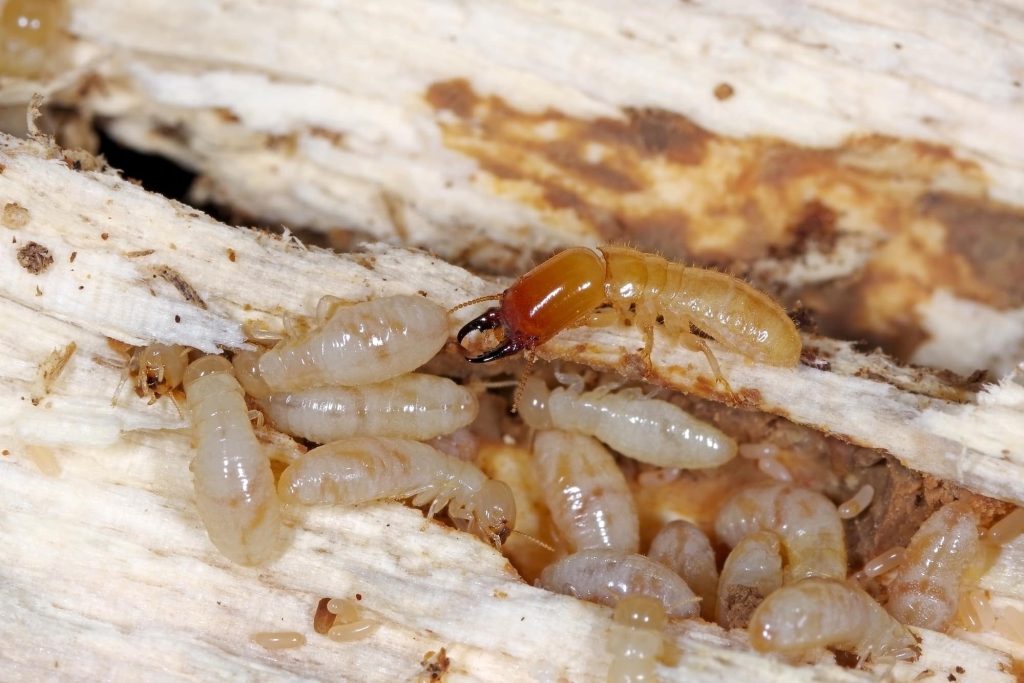The Importance of Annual Termite Inspections for California Homeowners
California’s warm climate and varying levels of rainfall create ideal breeding grounds for termites year-round. Unlike seasonal pests, termites remain active throughout much of the year, feeding silently on structural wood from the inside out. This hidden nature is precisely why regular, professional evaluations are critical for homeowners.
An annual termite inspection helps detect early signs of infestation before visible damage occurs. Without it, termites can compromise a home’s foundation, roof framing, and support beams; issues that are both dangerous and costly to fix. In areas where drywood and subterranean termites are both present, the risk is even greater. California’s mixed landscape, with its drought-prone zones and coastal humidity, often worsens the problem by weakening wood, making homes more vulnerable to invasion.
Scheduling inspections each year not only prevents long-term damage but also supports property value. Insurance policies rarely cover termite repairs, making prevention the most financially responsible choice. Early detection is often the difference between a minor repair and a major reconstruction.

What Inspectors Look for During a Visit
Annual termite inspections are detailed and methodical, focusing on vulnerable areas of the home where termites tend to thrive. Professionals are trained to recognize subtle signs that would otherwise go unnoticed.
- Exterior perimeter: Inspectors examine foundations, crawl spaces, and siding for signs of mud tubes or wood-to-soil contact.
- Attics and basements: These hidden spaces are prime real estate for termites. Damp wood, cellulose debris, and cracked joists are red flags.
- Interior structures: Even small pinholes or bubbling paint on walls can indicate internal tunneling. Inspectors probe suspicious wood for hollowness.
- Subterranean access points: Plumbing lines, expansion joints, and garage corners are evaluated, especially in slab-on-grade homes.
- Moisture-prone areas: Kitchens, bathrooms, and laundry rooms attract termites due to leaks or poor ventilation. Any signs of water damage increase the risk.
The thoroughness of this process allows for informed recommendations, whether treatment is needed or not. Even if no infestation is found, inspectors may advise on adjustments to landscaping, plumbing, or ventilation to minimize future risk.
Signs That Shouldn’t Be Ignored
While an annual termite inspection offers the best defense, homeowners should stay alert to indicators between visits. Some of the most common signs include:
- Swarmers (alates): Flying termites emerging indoors or around doors and windows are a sign that a colony is nearby.
- Discarded wings: After mating, swarmers shed their wings. Piles of wings on windowsills or floors are a strong indication of recent activity.
- Frass (termite droppings): Drywood termites push pellet-like frass out of tiny holes. These resemble sawdust but are granular and uniform.
- Mud tubes: Subterranean termites build pencil-sized tunnels to travel from soil to wood. These can appear on foundation walls or crawlspaces.
- Hollow or blistering wood: If wooden surfaces sound empty or show wavy, rippled textures, termites may be feeding beneath the surface.
- Tight-fitting doors or windows: As termites eat through wood, moisture can build up, causing frames to warp.
Noticing even one of these symptoms warrants prompt investigation. For more clarity on these signs, see this guide to termite problem warning signs.
Why Annual Checks Are More Effective Than One-Time Treatments
A one-time termite treatment may provide temporary relief, but it’s not a substitute for annual inspections. Even homes previously treated are at risk of reinfestation, especially if environmental conditions haven’t changed. Annual inspections act as a safeguard, ensuring that old problems don’t return and new issues are caught early.
Unlike reactive treatments, recurring inspections create a history of professional oversight, which is particularly valuable when selling a home. Buyers and agents often request termite clearance reports, and consistent records can speed up escrow processes.
Here’s why annual inspections carry long-term benefits:
- Detect re-colonization early: Termite colonies can regenerate or return to untreated areas nearby.
- Prevent unnoticed entry points: Soil erosion, foundation shifts, or landscaping changes can open new access routes.
- Tailor control strategies: Inspectors update recommendations based on seasonal shifts, property changes, or climate impacts.
- Avoid expensive surprises: Catching termite activity early is far more affordable than replacing structural elements.
Just as a physical check-up maintains personal health, a routine termite evaluation preserves your home’s integrity.
How California’s Climate Accelerates Risk
Termite activity is tightly linked to weather, and California’s climate patterns, particularly in Southern and Central regions, increase the likelihood of infestations. Mild winters allow termites to remain active longer, and sudden rains after drought can drive subterranean colonies toward residential structures in search of moisture.
Fluctuations in humidity and temperature also encourage wood degradation, creating more accessible food sources for termites. Homes in fire-prone areas may also be at higher risk, as post-wildfire rebuilding efforts often include fresh lumber, prime feeding grounds for drywood termites.
California’s long-term climate challenges, including drought and heat waves, have contributed to shifting pest patterns. Learn more about how climate conditions influence termite habits by reviewing termite behavior in wildfire zones.
As these environmental pressures continue, homeowners must adapt their pest prevention efforts to remain one step ahead.
Stay Ahead of Termite Trouble
Don’t wait until signs of damage appear. Schedule an annual termite inspection with trusted experts who understand California’s unique risks. For expert insight and property protection, contact Elite1 Termite Control, Inc..

